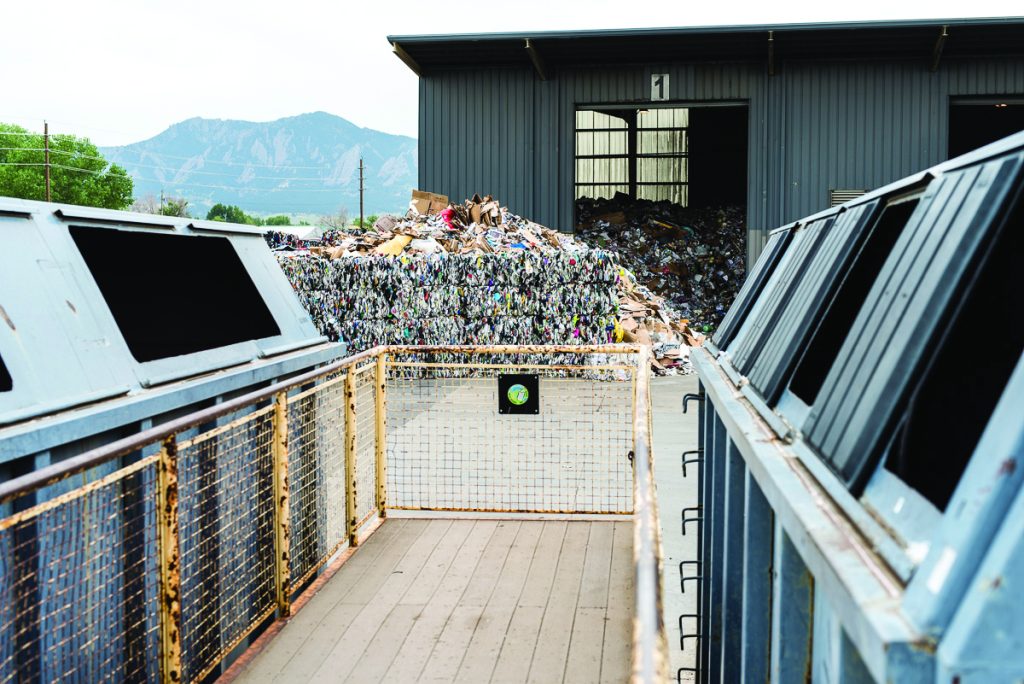
Colorado’s plan to massively expand recycling across the state — and get big companies to pay for it — took another step forward last month as state lawmakers approved a recently completed report showing just how much it will cost to recycle more goods in more places.
The needs assessment, approved last month by the joint budget committee of the Colorado Legislature, found it will take $160-$260 million to build out the state’s recycling services by 2030; $190-$310 million by 2035. That includes the cost of building new Materials Recovery Facilities (MRFs) in parts of the state that lack them, bringing the possibility of recycling to some 600,000 households.
Our current recycling system costs $80-$140 million to operate. But instead of local governments and residents paying for recycling, as they do now, the new system will be funded by the businesses that create the waste: Companies — including huge multinational corporations like Amazon, Walmart, The Coca-Cola Company, PepsiCo and General Mills — will be charged a fee on packaging used for their products.
Basically, explains Suzanne Jones, executive director of nonprofit recycler Eco-Cycle, “The consumer brands are going to pay to provide free recycling to all Coloradans.”

The system is an example of extended producer responsibility, or EPR, a policy that attempts to make companies pay for the disposal or recycling of the products and packaging they send into the market, or recycle materials themselves.
Common in the EU and Canada, some forms of EPR have existed in the U.S. for years. More than a dozen states have rules requiring manufacturer-funded recycling or take-backs of toxic materials like paint, batteries and electronics, or hard-to-recycle products such as mattresses.
Colorado is the fourth state to enact EPR systems for packaging. Companies must be in compliance by July 2025. There are exemptions, including for companies with less than $5 million in yearly revenue.
The goal is to reduce the amount and toxicity of packaging materials. Proponents hope to improve Colorado’s abysmal diversion rates: In 2021, the state kept just 16% of its (solid) trash out of the landfill.
The stated intent under EPR is 47-60% diversion by 2035, a figure major manufacturers are skeptical will be met. The Colorado Consumer Coalition, which represents business owners, questions projected recycling rates and says that, while more packaging materials may be recycled, the state will still create millions of metric tons of waste.
“We’re disappointed that the Joint Budget Committee did not see the obscene costs to this meager return as prohibitory to this program moving forward,” the statement reads. “This program will cost upward of $260 million per year, fees that will inevitably be passed on to Colorado consumers at a time when inflation has made grocery runs a painful experience for most families.”
What that fee will be is to be determined: It will come from the estimated total cost of an expanded system. In other places, companies typically pay “a percentage of a penny to a penny” per unit, says Jessica Heiges, PhD, a project director in zero waste and circularity at consulting firm WSP.
But, she notes, the definition of “unit” is “ambiguous.” It can be by weight — such as in Oregon, where preliminary fee estimates range from 15-26 cents per pound — or per product. “A cup could be a unit.”
As to whether those costs are being passed onto consumers, “we don’t know,” Heiges says. Comprehensive studies haven’t been done, and there are many factors influencing the costs of goods. “A good proxy” might be hard-to-recycle materials already subject to EPR.

There’s a case to be made that certain types of plastics could be considered hard-to-recycle-materials, Heiges says.
“Plastics, specifically styrofoam, are gunking up the mechanical recycling machines and making it harder for those machines to recycle” more easily processed types of plastics. “Contamination is really what is ruining our recycling rates.”
Colorado’s needs assessment revealed that 10-20% of recycling is contaminated, causing “equipment downtime, contaminated commodities, lost revenue, worker injuries, increased residue costs, reduced throughput, reduced efficiency and equipment wear and tear.” (The rate includes all materials, not just packaging.)
Proponents of EPR hope the system will financially incentivize companies to use better materials and recapture what’s already been produced rather than continuing to extract from the earth. The legislation also includes something called eco-modulation, wherein fees are reduced for packaging made out of more easily recyclable material such as cardboard.
“The whole idea is to incentivize them to use materials that are easy to collect, sort, put back in the marketplace and disincentivize things that take away from that system,” Jones says. We are “setting up the system to incentivize better outcomes.”
Heiges believes there’s also an “environmental justice component of waste” to consider. “What community is it being landfilled or incinerated in? What impacts does it have on soil degradation? I think that’s an oversight of many of us. We don’t even know where our waste is going.”
As more states pursue similar policies, supporters like Jones hope a national system will eventually supplant individual state policies.
“Producer responsibility is the game changer,” Jones says. “That’s the whole thing, to turn the system the right side up. The cost of recovering all this material is put on to the brands that are producing it in the first place. They’re going to pay for the stuff they put into the world.”
